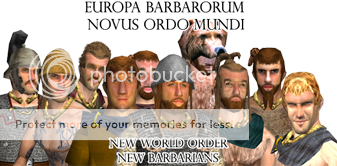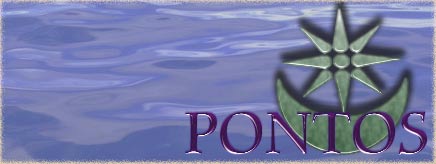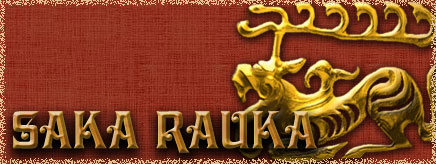
Originally Posted by
Finn MacCumhail

No one was speaking about Kon Tiki, but about Ra 2.
ok, I concede; but again, they do not prove anything about roman galleys, as again....they aren't built the same way, or have the same circumstance to their voyages. (like, how would Roman galleys know where to go, and why).
1) See above posts about ships.
2) They could always use Egyptian boats or bull-skin boats ;-)
By the way Mediterranean in winter hosts often storms and big precipitations, and in summer, yes it is quite. Also Magallanes when he crossed Pacific Ocean faced no storm and called it “Pacific”. But it was just luck. Who said ancient Atlantic travallers couldn’t have such luck too? Azores are pretty deep into the open Ocean. If the galleys didn't crack on the way to Azores, it makes me think, they can survive the whole journey.
brilliant: you have managed to ignore everything I just said.
1=yeah, I saw the ships: and again, they aren't built like galleys, or work exactly the same way: both are square shaped in the hull, while the galleys were elangated; both are smaller, and both, consequently, are actually (counterintuitively) better made for the sea.
2-again, Magellen did not use galleys (sheesh, can you use an example of a
roman galley replica doing this?). and yes, the mediteranean has storms (what sea doesn't?): no, this isn't as big an issue there, since galleys kept near as possible to the coast; should a storm arrive, the ship could easily dock or ground. and yes, galleys often sank due to storms-especially if loaded with supplies incorrectly, and far from any coast (e.g. roman galleys in the 1st punic war; even carthaginian galleys, and they had no Corvi). mind you, trade generally slowed down in the winter back then, precisely because of the storms and heavy rains typical of that season. again,
you can look this up for yourself*. (it doesn't explicitly say it here, but it is implied; it was why trade by Arabs in the 6th and 7th centuries was pursued northward in the summer, and southward in the winter, among other things)
and ok, I'll play your game: suppose everything was quiet, and there were no storms or hurricanes as the galley (somehow, for some reason) starts to cross the 900 or more miles to the azores. again, you would still run into a problem I mentioned earlier (which again, you ignore): how can they carry the supplies (food and water/wine) needed to feed rowers rowing almost 24/7 (unless the wind were somehow perfect and stiff)? remember, galleys didn't have large loads-relatively speaking. you would need to be lucky consistently in order to do this: considering the Atlantic's reputation for being somewhat...upredictable, I would say that this is far too unlikely to make any coherent contact with the Azores (or, while we're at it, America) possible. and suppose they did: why in the name of all things holy, would the Romans and carthaginians not write about this? don't you think they would have? I would expect some mention of "red skinned" people wearing cotton and engaging in gruesome blood rituals (which the Maya were by EB's timeframe already doing).
Accident – I really can’t get how the archaeologists start digging in America and accidentally found Roman statue in the tomb of 13-15 century? (Garcia Payon J. Una cabecita de barro, de extraña fisionomia // Boletin del Instituto Nacional de Antropologia e Historia. — México, 1961. — № 6. — P. 1—2.)
I did not say that, or even imply it. what I meant was that (for instance) someone, say an archaelogist or.tourist at a site was carrying a small figurine with him-perhaps a souvenir-and he/she dropped it. later, some unfortunate archaeologist found this figurine, and not knowing any better, came to the wrong conclusion. It's not the first time this happened (remember the Nicotine?), and not the last.
and about you source: I will reply thus: I want a PDF of this source of yours-preferably with an English translation-if in spanish.
Coincidence – what do you mean exactly? Accidently Indigenous peoples of America in Middle Ages or in ancient era produced exact things as Romans done?
you do realize that that is not what I meant, right? I never claimed that 2 cultures could produce two
identical items. allow me to clarify:
it is perfectly possible for two cultures to produce two superficially similar items (e.g. the maya and Indonesian pyramids, Swastikas (apologies to anyone offended out there), etc), or possibly the figurine. just because they are similar, does not mean they are the same. if you can show me that the item was not forged (either in context or production), or misplaced by a random, more recent person(s), I just might change my mind-or at least begin to.
look, if you would just carefully read what I have to say, you would realize that I am not saying it is impossible: for all I know, you are (somehow), right, and the romans et al had sufficient contact with the Americas to leave more than a few items (why they never wrote about this though, is beyond me). however, I am going to need more evidence than what you have produced (which strike me as dubious, innacurate, or incomplete). merely throwing paper titles and journals isn't going to do d*** in helping your cause: I want exact quotes, PDF's (of the paper's themselves), analyses of experts, etc.
also, I'm going to need an example of a roman style galley actually crossing the atlantic under normal (read: unpredicatable) conditions, on its own, with only the supplies it could carry. perhaps the fears of the relative fragility of the ship, by reason of size and shape, are either unfounded, or exaggerated. and no, don't give me any of these Hayerdal-style voyages: if the boats are built differently, and are smaller, then they can survive the atlantic (again, provided that they don't take in too much water).
mind you, I did twice throw a bone at you, and gave you one way the Romans could have done this: roman trade ships from the common era: only this time, you have to provide a clear, rational reason why they would want to go this far in the first place.
*here is the quote, in case you have trouble finding it:
"In overseas trade, land travel was conjoined with sea travel to form patterns with distinct seasonal rhythms. A crucial link to the East were the land caravans -- called mawsim, "season," because they departed at set times (late May, most typically, for the summer caravan) --traversing Morocco, Algeria, Tunisia (which was for most of the period the entrepôt between Andalusi and eastern commerce), finally arriving in Egypt after a journey of two or three months. Caravans were of particular importance in the winter, when the sea was generally closed to shipping, and in the summer, when the rhythm of trade and travel picked up, to fill in between the more or less regular sailings of organized trading expeditions. Ships sailed in convoys, setting out in the spring and returning in the fall; the convoy from al-Andalus usually arrived in Egypt in late August or early September.(19) Merchants, in particular, preferred sea to overland travel: it was faster, surer, and less hazardous. This was true even when the distance involved was short. A man wanting to travel from Libya to Tunisia around 1140 was advised to accomplish this mission by taking a boat first to Seville and then proceeding to his destination.(20)"




 Reply With Quote
Reply With Quote










 from Megas Methuselah, for some information on Greek colonies in Iberia.
from Megas Methuselah, for some information on Greek colonies in Iberia.





 from plutoboyz
from plutoboyz



 " -alBernameg
" -alBernameg
Bookmarks